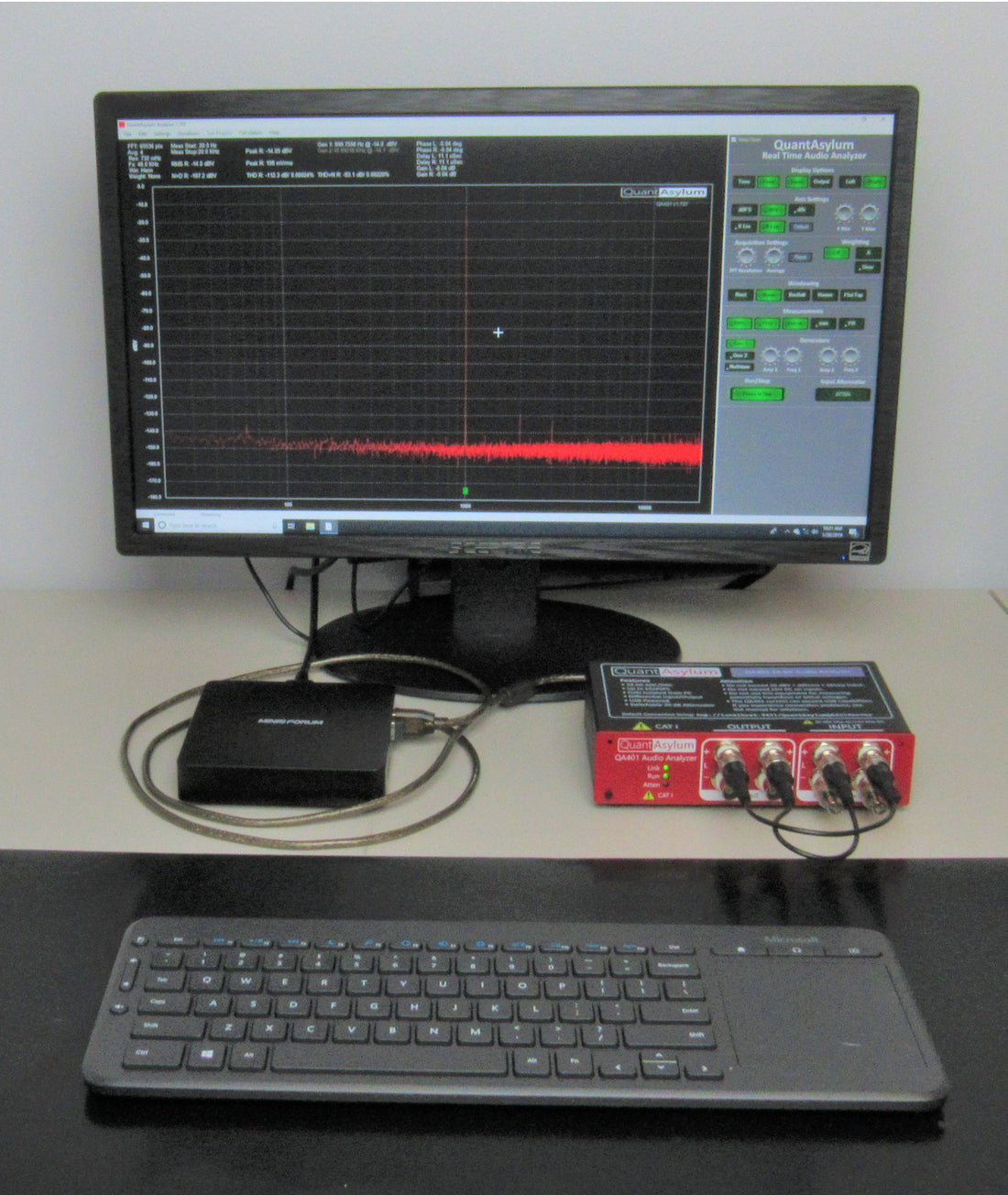
Low-Cost Test Setups
Share
A common question we get is "Can I run the QA401 on an older machine?" In general, as long as the PC is running Windows 10 the answer is "yes." The user experience will degrade gracefully as you opt for larger FFT sizes. In other words, you can still see very high resolution data, you will just wait a bit longer to see it--not much longer, perhaps 20-30% longer than on a super-fast machine. That's because the actual compute-intensive part of the process is a small portion of time in the overall acquisition.
Memory matters more than CPU speed. If you have a 2 GByte machine, then opting for large FFTs will hurt--the QA401 application can need several hundred MBytes of RAM with larger FFT sizes selected.
But RAM is cheap. And so is a modern CPU. We purchased a $119 Fanless Mini PC from Amazon. This is a very tiny PC with 4GB of RAM, 32GBytes of non-volatile storage to hold the OS and programs, Wifi, and an HDMI output. The machine booted, went through the Win10 sign-in and update process, and runs nicely. The CPU used is an Intel Atom X5-Z8350 @ 1.4 GHz. This machine lands at about 1265 for a CPU Mark. Maybe a little faster if the machine is running in turbo mode. But overall, it's a very comfortable experience with the QA401. And the 4GBytes of RAM isn't an issue either--it's plenty.
In the picture below, you can see the 1080P HDMI monitor, QA401, the mini PC and the keyboard:

The MiniPC cost is $119 and includes Windows 10. The keyboard is $29, and the display is $90. If you are looking for a dedicated setup for your QA401, the above might be a good place to start.
USB performance can, in some cases, have an impact on the QA401's ability to make measurements. Previously, we took at a look at USB noise and the impact on very sensitive measurements near the limits of the QA401. If you have a PC with particularly nasty port noise, the solution is to use a powered hub--that will generally clean things up. But for convenience, it's just better if you can use the PCs USB port directly. In the case of the Fanless MiniPC used above, the USB performance in terms of added electrical noise was fine, with zero impact on the measurements.
In the plot below, you can see the noise floor of the QA401 while powered from the MiniPC. It's clean, at -115 dBV from 20 to 20 KHz, with no spurious products. There is no degradation from this Mini PC due to USB power.

Another plot shows a THD loopback measurement. Again, there is no degradation at all from the MiniPC.

Lastly, the QA401 can consume around 600 to 650 mA at times, depending on the mode of operation. Most USB ports don't mind the extra current, and powered hubs never do. But there are some laptops that are very strict, although those seem to be in decline. But in any case, none of the 3 USB ports on the MiniPC complained about the additional current.
Summary
If you are looking to build a dedicated PC test bay for testing your products, you don't need a killer spec machine to achieve those goals. An upcoming release of Tractor will also permit storage of test results to a database in the cloud, ensuring a low-spec machine such as the one outlined above can meet your dedicated testing needs even though it has just 32 GBytes of storage. These machines are also fanless with solid-state drives, meaning your measurement area won't be polluted by mechanical noises from fans and spinning media. Very important if you are doing mic measurements or are inside an anechoic chamber.
